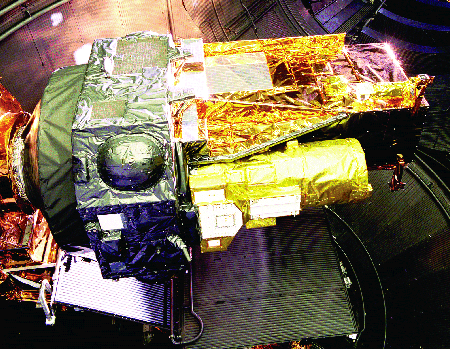TIM FURNISS / LONDON
Europe plans 14 space science missions, plus NASA collaboration, as part of €1.87 billion Cosmic Vision programme
The galaxy mapping mission Gaia has been saved, but the Venus Express orbiter has been cancelled in a "complete reassessment" by the European Space Agency (ESA) of its space science programme as a result of budgetary restraints.
ESA's space science budget for 2002-06 is €1.87 billion ($1.7 billion). "We are working under the assumption that the science budget will remain flat for the years to come," says the agency. The next budget review for the post-2006 period will be made in 2004.
ESA plans 14 space science missions in three "production groups" under a new name, Cosmic Vision 2020 - astrophysics, solar system science and fundamental physics.
Missions within each group "will be built synergistically using common technologies and engineering teams where possible", says ESA.
The agency will, meanwhile, continue to collaborate with NASA on the operational Hubble Space Telescope, the planned Next Generation Space Telescope and a possible space technology STEP 2005 mission to test "the nature of mass and the basis of mechanics".
Missions in astrophysics group one are the operational Newton X-ray telescope and the planned Integral, X- and gamma-ray observatory, to be launched this year.
Group two features the Herschel/Planck, which will explore the infrared and microwave universe and cosmic microwave background radiation, and Eddington, which will search for extra-solar planets and study stellar seismology. These missions, to be launched in 2007-08, will be regarded as a "single project" using the same spacecraft bus to save money.
Group three will include Gaia, to be launched in 2012. Major technical changes will cut its cost through the use of new technologies and "more effective spacecraft development and procurement", ESA says.
Next year's Rosetta comet explorer and the Mars Express orbiter, due for launch in 2003, are Solar system science group one missions.
Group two includes Smart 1, a solar propulsion technology mission planned for 2003 and the Bepi Colombo Mercury orbiter and Solar Orbiter, for launch in 2011-12, the latter in co-operation with NASA. The last two will also be implemented as a single activity, "leading to significant savings", ESA says.
Fundamental physics missions are STEP 2005, to study the equivalence principle; Smart 2, another technology demonstrator mission, to be launched in 2006; and Lisa, a joint mission with NASA to search for gravitational waves in 2012.
ESA admits Cosmic Vision will involve increased risk as the programme will be "less resilient to an event like the loss of the four-spacecraft Cluster science mission in 1996".

Source: Flight International























